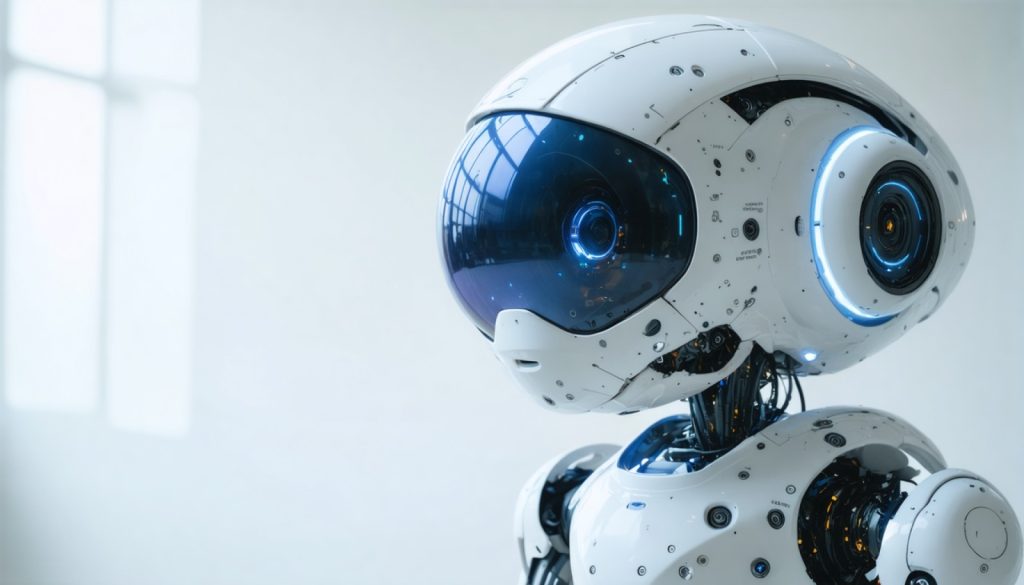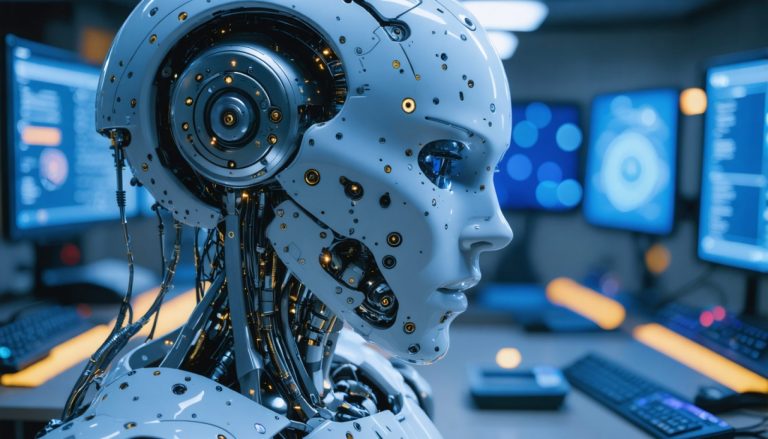
- Alexander Htet Kyaw, an MIT MAD Fellow, integrates AI, AR, and robotics, reshaping human-machine interaction.
- Kyaw developed Curator AI, a platform using AR and AI for personalized furniture shopping, winning top prize at the MIT AI Conference.
- Estimate, another innovation, helps small businesses by providing detailed renovation cost estimates via AR and AI.
- Kyaw explores sustainable art and architecture with Unlog, using gesture recognition and AR to minimize environmental impact.
- His project BendShelters uses modular bamboo for refugee shelters, supported by MIT Sandbox and Amazon Robotics.
- Kyaw collaborates with experts to democratize design and construction using speech recognition and robotics.
- His work emphasizes the intersection of technology and humanitarianism, advancing a future where innovation benefits all.
A vivid transformation is unraveling as technology intertwines itself with our daily existence, no longer just peripheral but central in reshaping how we live. Enter Alexander Htet Kyaw, an MIT MAD Fellow and relentless innovator, whose creations blur the lines between human interaction and machine intelligence. With dual master’s degrees in architectural computation and electrical engineering and computer science, Kyaw has orchestrated a symphony of artificial intelligence, augmented reality, and robotics to devise integrated solutions that are changing the game.
Among his masterstrokes is Curator AI, a visionary platform that reimagines the way we approach furniture shopping. Imagine standing in a room, empty and uninspired, and simply speaking your desires into existence. Kyaw’s innovation utilizes AR to accurately capture a room’s dimensions and layout, while a sophisticated vision-language model generates tailored furniture recommendations that align perfectly with the spatial characteristics of your environment. This interplay between artificial intelligence and augmented reality makes the daunting task of designing a room intuitive and personal.
Joining forces with fellow MIT talents Richa Gupta, Bradley Bunch, Nidhish Sagar, and Michael Won, Kyaw’s project clinched the top prize at the MIT AI Conference—a testament to their groundbreaking approach. But the implications of Curator AI extend far beyond simple shopping assistance, hinting at a future where technology harmonizes perfectly with our aesthetic needs.
Kyaw’s creativity knows no bounds, venturing further into practical realms with innovations like Estimate. This tool, conceived during an MIT Sloan hackathon, empowers small businesses by leveraging AR and object recognition to deliver precise renovation cost estimates. Adding a touch of foresight, it visualizes the transformation via generative AI, demystifying the outcome of painting projects for local businesses and elevating client interactions.
His accomplishments echo in art as well, embodied in Unlog, a sculptural marvel conceived using gesture recognition technology to envision architecture as art and sustainability combined. With fingertips guiding AR-mapped dimensions, Kyaw collaborates with materials in their natural state, shaping towering compositions without the environmental toll of industrial processing. Unlog stands not only as a physical structure but as a representation of sustainable construction, consciously shedding conventional processes that burden our ecosystem.
However, nowhere is Kyaw’s impact more profound than in his commitment to humanitarian causes, illustrated through his venture BendShelters. Drawing from his experiences and the pressing needs of his native Myanmar, he harnesses modular bamboo technology to create deployable shelters for refugees. This ingenuity has attracted praise and funding from pioneering entities like MIT Sandbox and Amazon Robotics, acknowledging the deep societal resonance of his work.
In collaboration with renowned minds like Professor Neil Gershenfeld, Kyaw is magnifying the potential of speech recognition and robotics in construction, seeking to democratize design and fabrication for global communities. His multifaceted projects are interwoven with a common thread: the innate human desire to connect, build, and evolve alongside technology.
Alexander Htet Kyaw exemplifies the synergy of creativity and compassion through technology. His visionary efforts are more than innovations; they are lifelines extended into new realms of possibility, advocating a world where technology serves humanity deeply and sustainably. In every corner of his work, one finds the reminder that our future is not just about advancing technologies, but ensuring those technologies advance us all.
Revolutionizing Interiors: The Future of AI-Driven Design
The Rise of AI-Driven Design in Everyday Life
Alexander Htet Kyaw is leading the charge in seamlessly blending technology with daily life, pushing the boundaries of what is possible through his innovative use of artificial intelligence, augmented reality, and robotics. These technologies are not merely advancements but transformative tools that redefine our environment and experiences.
Curator AI: Transforming Furniture Shopping and Interior Design
Curator AI is reshaping the interior design world by utilizing augmented reality and vision-language models to create immersive, personalized shopping experiences:
– How It Works: By capturing a room’s precise dimensions via AR, users can articulate design preferences, and Curator AI suggests furniture that suits the space, harmonizing aesthetic desires with practical reality.
– Real-World Applications: From homeowners seeking personalized living spaces to businesses aiming to streamline furniture acquisitions, Curator AI presents an efficient, user-friendly solution.
– Potential Challenges: While innovative, it requires high-quality AR fidelity and consistent AI training to ensure suggestions remain relevant and diverse for different tastes and cultural contexts.
Estimate: Empowering Small Businesses with Cost Transparency
Estimate empowers small businesses by providing accurate renovation cost estimates through AR and object recognition, simplifying potentially overwhelming renovations:
– Functionality: Businesses can visualize changes, foresee costs, and understand the scope of work involved long before any physical alterations begin.
– Market Impact: This could transform how contractors and clients interact, fostering transparency and trust.
– Considerations: Accessibility is key—ensuring that small businesses with varying levels of tech literacy can utilize the platform effectively.
Unlog: Merging Sustainability with Architectural Elegance
Unlog stands out as a testament to sustainable art and architecture, created using gesture recognition technology:
– Environmental Implications: By foregoing industrial methods, Unlog offers a sustainable approach to construction, reducing ecological footprints.
– Design Philosophy: Merging architectural design with art, Unlog redefines how we perceive space and form.
– Limitations: While innovative, mass adoption would depend on availability of sustainable materials and integration with current architectural methods.
BendShelters: A Humanitarian Revolution in Shelter Design
Addressing pressing humanitarian needs, BendShelters utilizes modular bamboo for refugee housing:
– Key Features: Lightweight, easy to assemble, and highly portable, these shelters offer quick deployment in crisis scenarios.
– Broader Implications: Beyond refugee camps, this model could revolutionize temporary housing for disaster relief worldwide.
– Scalability Concerns: Ensuring that materials are sustainably sourced and that production can meet demand remains a challenge.
Bridging Technology and Humanity: The Broader Vision
Kyaw’s collaboration with experts like Professor Neil Gershenfeld explores democratizing design via speech recognition and robotics, envisioning a world where technology meets fundamental human needs.
Future Trends and Industry Insights
As AI and AR technologies become increasingly accessible, expect a rise in personalized, efficient consumer experiences and humanitarian applications:
– Market Forecast: The global market for AR and AI in interior design is projected to grow significantly, driven by demand for customization and efficiency.
– Technological Sustainability: Continued emphasis on sustainable practices will guide future developments, aligning tech innovations with eco-friendly goals.
Quick Tips for Engaging with AI-Driven Solutions
1. Leverage Technology: Explore AI and AR tools to experiment with interior design, saving time and resources.
2. Sustainability Focus: Opt for solutions that prioritize eco-friendly models to promote sustainable consumption.
3. Stay Informed: Keep abreast of technological advancements to utilize the latest features and capabilities effectively.
For more insights on technological innovations enhancing life, visit MIT and discover the forefront of groundbreaking research.



